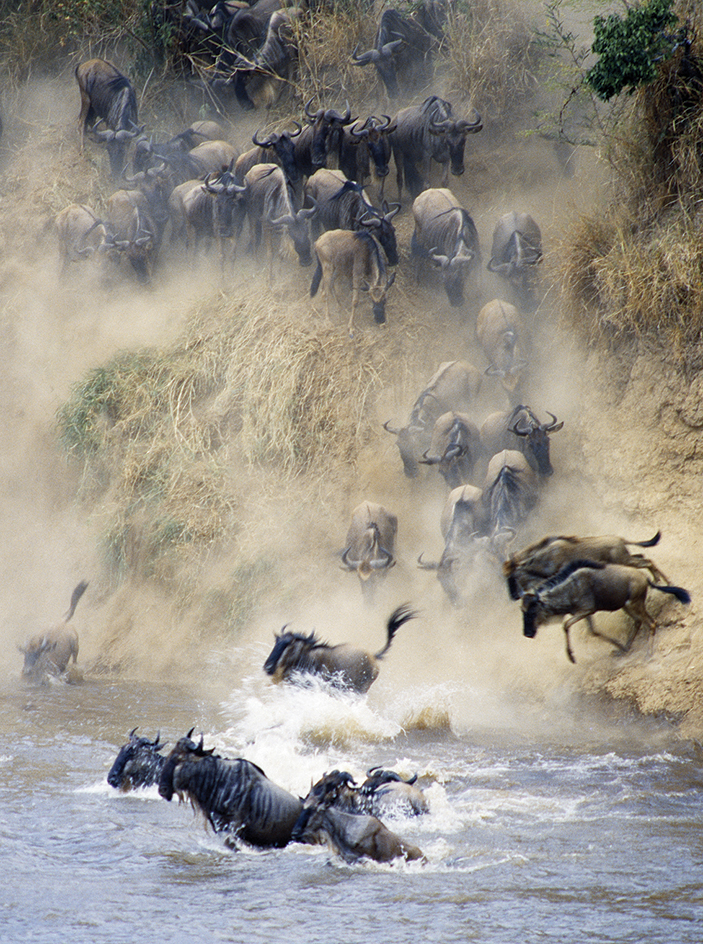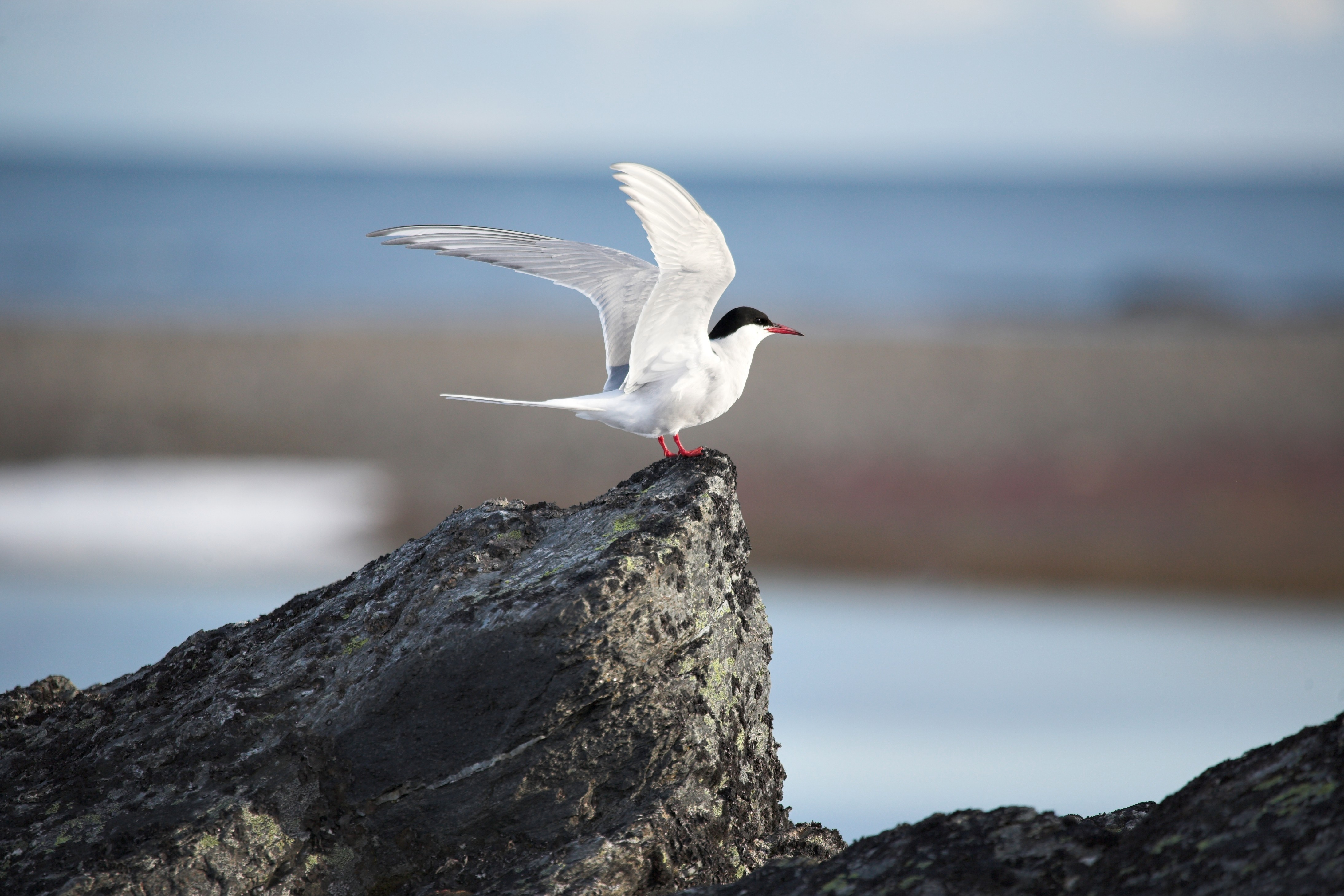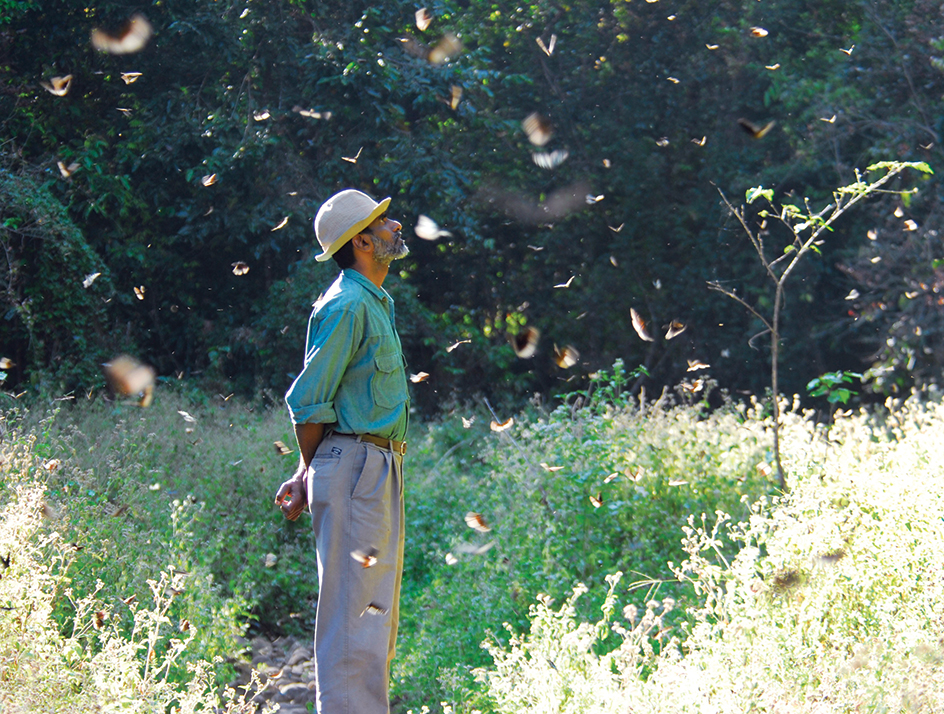Migration, in biology, is the movement of animals to a place that offers better living conditions. Many kinds of animals regularly migrate to avoid unfavorable changes in weather or food supply, or to take advantage of better living conditions elsewhere. Human beings also migrate, but they do so for political and social reasons as well as biological ones. For information on human migrations, see Immigration .

Biologists use the term migration to describe several types of movements. Some biologists, particularly those who study insects, refer to one-way journeys as migrations. Such movements take place when animals leave an area in search of better living conditions, and neither they nor their descendants necessarily return to the original area.
Other biologists refer to the long-term historical changes in the distribution of animals as migrations. But most biologists define migrations as regular, round-trip movements between two areas. Each area offers more favorable living conditions than the other at some point in the animals’ lives. This article discusses such regular, round-trip migrations.
Migrations take place on land, in water, or in the air. Some animals migrate only short distances. For example, many frogs make yearly migrations of only a few miles or kilometers between their breeding and nonbreeding homes. Other migrations cover thousands of miles or kilometers. Arctic terns rank among the animals that migrate farthest. These birds travel as much as 22,000 miles (35,400 kilometers) in a year. 
Types of migrations.
Most migratory animals make (1) daily migrations or (2) seasonal migrations. Other migratory animals make only one or a few round-trip journeys during their lifetime.
Daily migrations
take place among many of the small, drifting animals that live in the ocean. These zooplankton swim hundreds of feet or meters below the surface during the day. Each night, they migrate to the upper levels of the water.
Seasonal migrations
take place twice a year. They occur in connection with periodic changes in temperature or rainfall. There are three main kinds of seasonal migrations: (1) latitudinal migrations, (2) altitudinal migrations, and (3) local migrations.
Bats, seals, some whales, and most migratory birds perform latitudinal migrations. That is, they migrate in basically a north-south direction. Some mountain-dwelling animals make altitudinal migrations up and down the mountain slopes. For example, mountain quail and mule deer spend summer in high elevations and move to lower areas in winter. Many tropical birds and mammals make local migrations. They move to moister regions of the tropics during the dry season and return to their original homes when the rainy season begins.
Less frequent migrations
are made by some animals. For example, salmon are born in freshwater streams but soon migrate to the oceans. After several years, they return to their freshwater birthplaces to breed. Pacific salmon die soon afterward, but some Atlantic salmon swim back to the ocean and return to their birthplaces to breed as many as three times. Female sea turtles also make a number of migrations during their lifetime. Every two or three years, mature female green turtles and loggerhead turtles swim up to 1,400 miles (2,300 kilometers) to the beach where they hatched. There they lay their eggs.
Why animals migrate.
Migration enables many species to take advantage of favorable weather and abundant food supplies in areas with changing environments. In some parts of the world, for example, food is plentiful in summer but becomes scarce during the cold winter months. Many animals that live in these regions migrate to warmer climates in the fall. They return in the spring when the weather warms up.
Many migrations are related to reproduction. Numerous animals migrate to breeding areas where their young have the best chance for survival. Migratory birds breed in their summer homes, where the food supply is most abundant. Humpback whales, on the other hand, migrate from their polar feeding grounds to give birth in tropical or subtropical waters. The warm waters provide little food for the adults, but the newborns could not survive in the polar seas.
What triggers migrations.
Many animals begin their migrations after unfavorable environmental conditions set in. But among other species, the factors that trigger migrations are more difficult to explain. Many migratory birds, for example, leave their winter homes in the tropics while conditions there are still favorable. Among such species, migration may be triggered by environmental changes that are associated with the onset of warm weather and increased food in their northern breeding grounds. Experiments show that changes in daylength stimulate the migrations of many species of birds. In spring, the increasing hours of daylight trigger the release of certain hormones in the bodies of the birds. Hormones are chemical substances that regulate many body functions. In this case, the hormones stimulate preparations for the northward trip.

Besides using environmental clues, many seasonal migrators probably have an inborn “calendar” that tells them when to migrate. Some birds show seasonal migratory behavior even when kept under constant conditions in a laboratory. An inborn timing mechanism may trigger the migration of salmon and other animals that migrate at different stages of their life.
How migrating animals find their way.
Research has shown that animals use a number of ways to gather directional information during migrations. Many are guided by the sun, the moon, and the stars. Such travelers must be able to allow for the movements of these heavenly bodies in determining direction. Others follow landscape features, such as rivers or mountain ranges.
Loading the player...Herd of migrating wildebeest
Animals rely on more than visual cues when they migrate. Salmon find their way back to their birthplace by recognizing the odors of their home streams. Some animals are guided by changes in temperature, moisture, wind direction, or Earth’s magnetic field. Sea dwellers may use information from ocean currents.
Many animals use more than one compass during their migrations. According to many biologists, some species of birds are guided by the sun and Earth’s magnetic field during the day, and by the stars and the magnetic field at night. On cloudy days and nights, these birds may use the magnetic field alone to find their way.
Sometimes, migrating animals are forced from their normal route into an unfamiliar area. In some cases, the “lost” animals seem to be able to determine where they are and how to reach their original destination. This process is called navigation. Although there are many examples of what appears to be navigation by animals, scientists know little about how this process works.
Some of the most convincing evidence of animal navigation comes from experiments with shearwaters, sparrows, and homing pigeons. Scientists captured these birds and took them to unfamiliar areas up to thousands of miles or kilometers away. Most of the birds successfully returned to the original capture point.
Other experiments indicate that although young animals are able to migrate, they may not be able to navigate from unfamiliar areas. For example, European starlings (also called common starlings) normally migrate in a southwest direction from their breeding grounds around the Baltic Sea to wintering areas bordering the English Channel. Scientists captured both adult and young starlings that had reached the Netherlands during a migration. They took the birds to Switzerland and released them. The adult starlings corrected for the move and reached their normal wintering grounds. But the young birds, which were making their first migration, continued to fly southwest. The young birds ended up in Portugal, Spain, and southern France.
